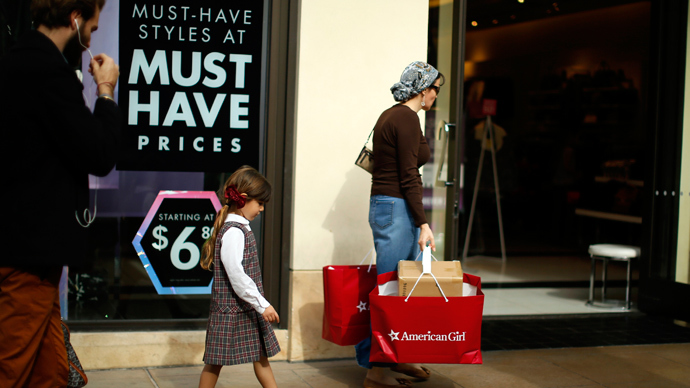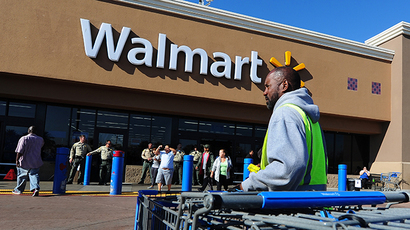Red Thursday vs. Black Friday: Success of early US sales questioned

A shorter Christmas shopping season in 2013 means US retailers have decided to kick off the traditional sales fever, known as "Black Friday", on Thursday. Experts say the day could be a loser, as most Americans will sniff at shopping on Thanksgiving.
This year the traditional sales at major US retailers, including Wal-Mart and Best Buy, will begin on Thursday at 6 pm and last till Friday midnight, giving Americans 6 extra hours extra to find a bargain.
Credit Suisse analyst Gary Balter has already dubbed the additional sales period as “Red Thursday”, doubting that regular Americans will rush for cheap bargains on Thanksgiving evening, a day when families gather around the table to give thanks for the harvest and the preceding year.
The other reason for a retailers’ rush is their desire to woo more customers during the post – crisis slump, according to the Financial Times.
Historically "Black Friday" as been the day when retailers saw an upshift in profitability, and marked the start of the Christmas sales period in the US that lasts till December 24. Since the sales spree normally kicks off on the third Friday of November and isn’t tied to a particular date, this year the overall shopping period is 6 days shorter.

On-line spree
The holiday season ups the ante. Both online and brick-and-mortar retailers can make up to 40 percent of their annual revenue in November and December, the Associated Press reports. And this year, with e-commerce booming, traditional retailers will be struggling to shrug off growing competition.
Holiday sales are expected to rise 3.9 percent to $602.1 billion, according to The National Retail Federation. Of that, about $78.7 billion is expected to be online, up 15 percent from last year, according to Forrester Research.
"The US electronic commerce growth rates fluctuate from 12 percent to 15 percent, which considerably ahead of traditional shops, where they are only 1-3 per cent. But the online sales still remain a small part of the retail sector: its share doesn't exceed 8 percent. If online trade continues to grow at the same pace, its share will reach 40 per cent within a few years. Who will win the fight in this "Black Friday"? I think, Amazon and e-Bay", Doug Stephens, the Retail Prophet founder, told Vesti Economics.













